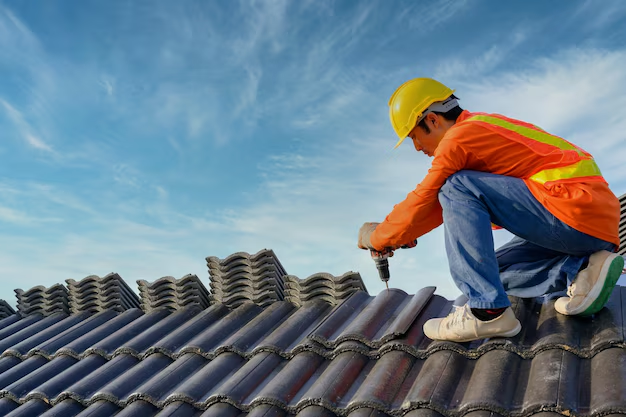When Should You Replace Your Roof? Here’s Your Essential Guide
A roof is more than just a protective shield; it's a home's crown that endures harsh weather conditions day in and day out. Knowing when to replace your roof can save you from unexpected costs and ensure the safety and comfort of your home. But how often does a roof need to be replaced? The answer depends on several factors, including the type of roofing material, the climate, and the quality of installation.
Roofing Materials and Their Lifespans
Different roofing materials come with different lifespans. Here’s a quick rundown:
- Asphalt Shingles: The most common roofing material, asphalt shingles, typically last 20-30 years. These shingles are cost-effective and provide decent durability.
- Wood Shingles/Shakes: Offering a more rustic look, wood shingles can last about 20-40 years with proper maintenance.
- Metal Roofing: Known for its durability, metal roofs can last between 40-70 years, making them a long-term investment.
- Clay Tiles: Popular in warmer climates, clay tiles are extremely robust and can last up to 50-100 years.
- Slate Tiles: The premium choice known for their incredible longevity, slate tiles can endure for over 100 years with proper care.
Factors Affecting Roof Longevity
Your roof’s lifespan is inherently linked to several critical factors beyond just the material:
- Climate Conditions: If your area frequently experiences severe weather conditions like hurricanes or hailstorms, your roof may wear out faster.
- Installation Quality: A well-installed roof by certified professionals can last significantly longer than one that's poorly installed.
- Maintenance: Regular maintenance, such as cleaning gutters and replacing damaged shingles, can extend the life of your roof.
- Ventilation: Proper attic ventilation prevents moisture buildup and heat damage, both of which can shorten a roof’s lifespan.
Signs It’s Time for a Replacement
Even before your roof reaches the end of its expected lifespan, it might give certain signs that replacement is imminent:
- Curling or Buckling Shingles: This often indicates weathering or internal issues.
- Missing Shingles: Missing shingles are a sure sign of damage needing immediate attention.
- Granule Loss: Look for granules in gutters or downspouts; they're a sign shingles are past their prime.
- Moss or Algae Growth: While not harmful initially, growth can retain moisture and damage shingles over time.
Understanding these indicators can serve as an early warning, allowing you to plan and budget for a potential replacement, rather than facing emergency repairs.
Financial Considerations and Assistance
Replacing a roof can be a substantial financial undertaking, but there are ways to manage costs effectively:
- Insurance: Homeowners insurance might cover roof replacement due to damage from an unavoidable event, so check your policy details.
- Government Assistance: Certain government programs might offer financial aid or grants, especially if you qualify as a low-income household.
- Loan Options: Home improvement loans or mortgage refinancing could be viable options to fund a new roof.
- Energy-Efficient Upgrades: Federal tax credits might be available if you invest in energy-efficient roofing solutions, potentially reducing the overall cost.
Navigate Your Options Wisely
A roof replacement is a significant decision that requires careful thought and financial planning. Explore all available avenues, including government aid programs and financial options, to ease the burden of this necessary home improvement. Be proactive; maintaining your roof’s integrity will provide safety, add value, and enhance your quality of living.
Financial Assistance and Resources Table 🏠
- 🏦 Home Improvement Loans: Look into local banks and credit unions for low-interest loans.
- 🏆 Federal Tax Credits: Visit the Energy Star website for potential tax credits for energy-efficient installations.
- 📈 Government Aid Programs: Check your state’s housing department for grants aimed at low-income families.
- 🏡 Home Equity Loans: Consider tapping into home equity for large home expenses.
- 🌍 Community Action Agencies: Many local organizations offer weatherization and home repair assistance to qualifying households.
